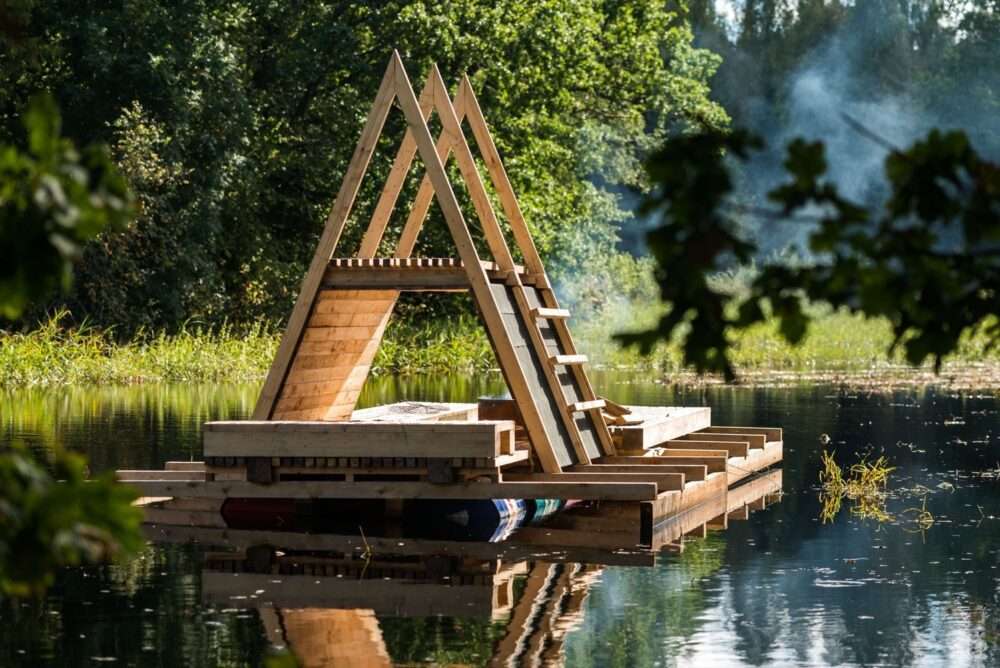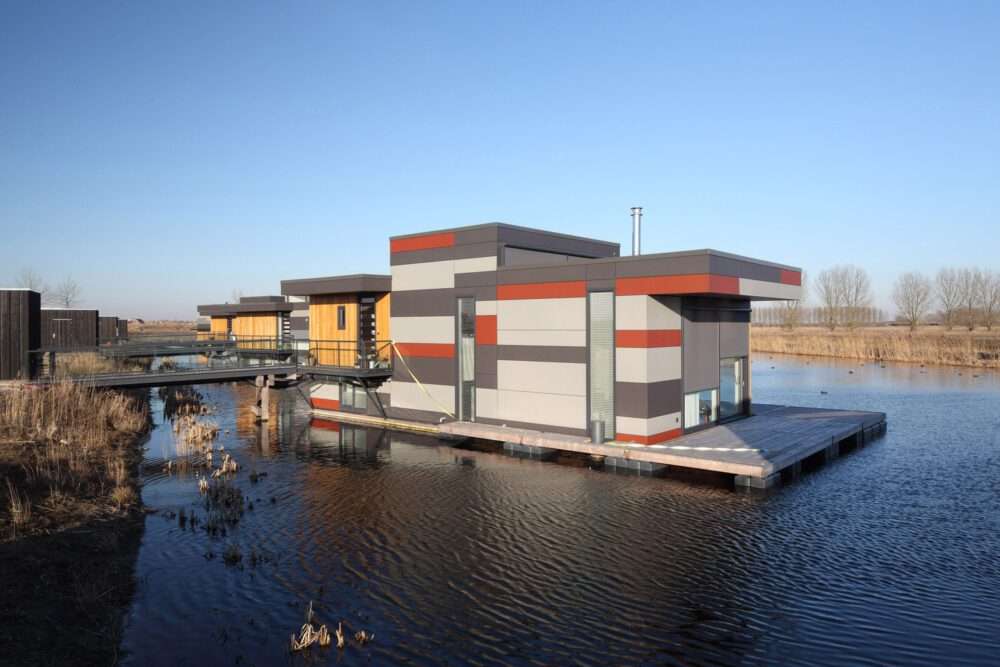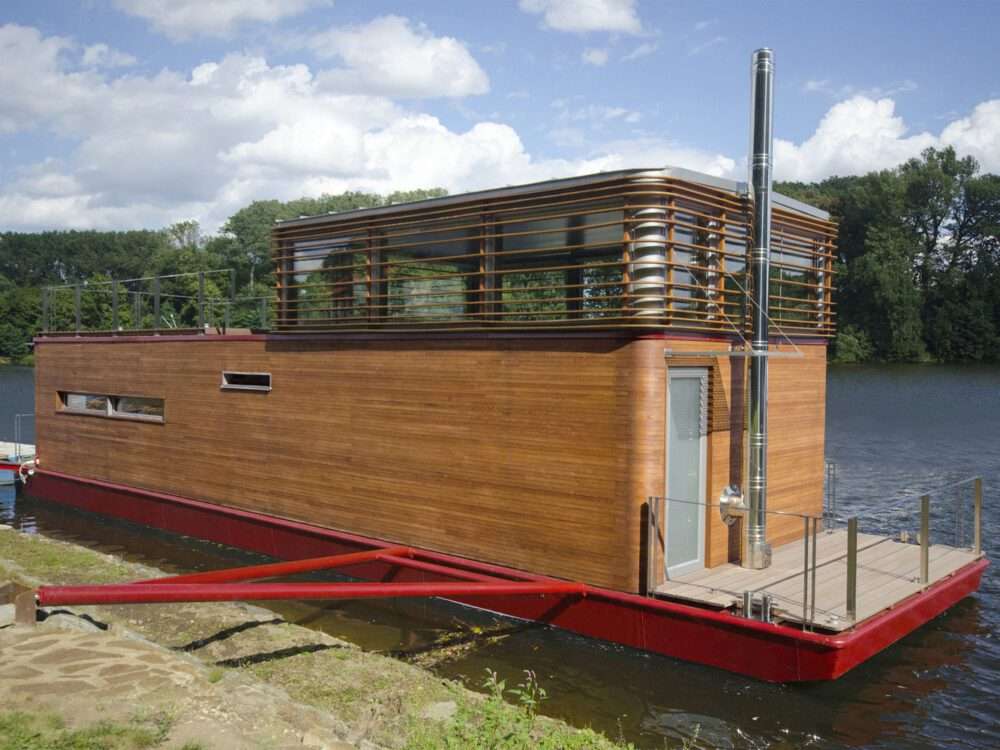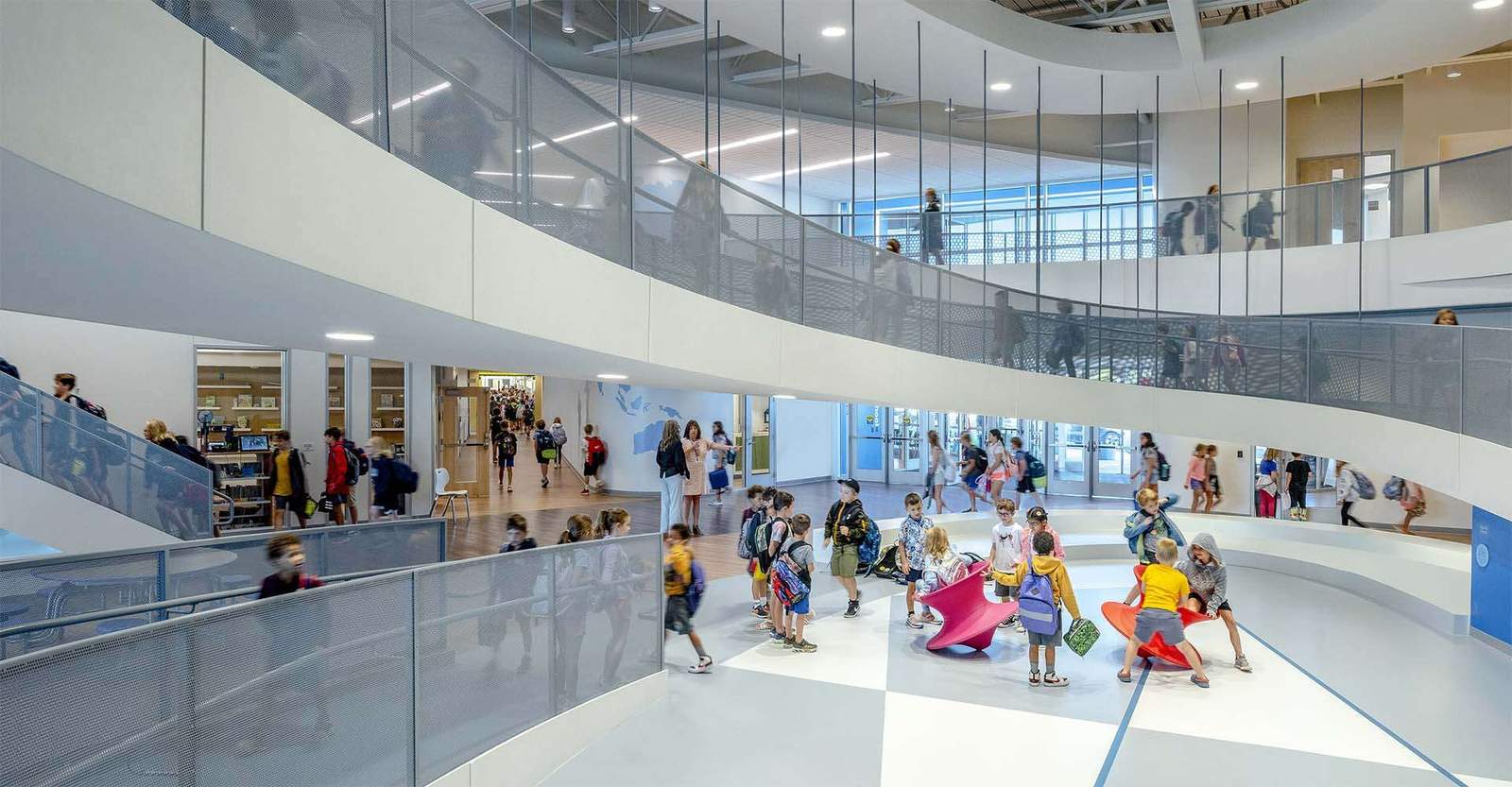Reasons for not sinking floating architecture,
The aquatic environment has always fascinated dreamers and researchers.
Around 1960, in the midst of the fierce Cold War space race,
French explorer Jacques Cousteau developed equipment such as the Aqualung,
To reveal the depths of the sea that have remained as unexplored as outer space itself.
He even stated that within 10 years we could occupy the bottom of the sea with the name “Aquanauts” or “Oceanutas”,
Where it will be possible to spend long periods extracting mineral resources and even growing food.
Sixty years later, the sea floor is still reserved for just a few,
and humanity has been more concerned with plastics in the oceans and rising sea levels than with colonizing the ocean floor.
But the proximity to a body of water continues to attract most people.
Whether out of concern or in response to flood risks and overpopulation,
some have turned to idealistic proposals and floating architecture.
The fundamental differences between building homes on land versus water
From the Archigram to the Japanese metabolites, architects also spent a lot of time wondering what the occupation of water would look like.
Proposals from the 1960s by architects ranging from Kenzo Tange to Buckminster Fuller – many centered in Japan
– I imagined an urban fabric unfolding on water, combating the lack of space and rising costs of urban land in Tokyo.
Although these idealistic proposals have remained on the drawing boards,
examples of structures and even floating societies abound in history.
The floating islands of the Ma’dan people in the wetlands of southern Iraq, for example, date back more than 6,000 years.
In Peru, there are artificial islands in Lake Titicaca with fixed buildings and residents, built primarily of totora
– a common plant in the region – also used in boat-making and other construction.
And if we talk about the occupation of water, then it is also impossible not to mention the Netherlands,
where a significant part of the territory is located below sea level, buildings and dams,
With sea levels rising due to global warming,
the total water surface area of the planet is expected to increase exponentially in the coming years.
The United Nations (UN) estimates that by the year 2100, sea levels will rise between 26 and 82 cm worldwide.
The first country to completely disappear due to sea level rise
Kiribati, an idyllic archipelago in the middle of the Pacific Ocean,
will be the first country to disappear entirely due to sea level rise
– there are researchers who estimate this will happen within 10 to 15 years,
Plans to resettle its population are already underway.
As much as there are opposing political currents that deny that humanity can cause planetary changes,
the United Nations has supported research on floating cities to house so-called climate refugees.
A speculative proposal, Oceanix City,
has been developed by Bjarke Ingels Group as a flexible and sustainable floating community,
designed to accommodate 10,000 people to organically grow, transform and adapt over time.
But more common than floating islands and cities are stand-alone buildings that remain on the water,
without a foundation directly attached to the land.
In the canals of London, Vancouver, Boston and other cities it is common to find boat houses,
some well established for a long time, others that can move and settle elsewhere.
The old houseboats are built on large driftwood logs.
Following this precedent, a very common form of floating construction uses large plastic tubs placed under the construction platform.
This is how the NLÉ Architects Floating School in Makoko was built.
For example,
As a prototype for improving the architecture and urbanism of coastal cities in Africa through the construction of floating homes, community centers and playgrounds.
Unfortunately, the building ended up collapsing after 3 years.
The floating piers, one of Christo’s last works, developed for the Venice Art Biennale in 2016,
allow visitors to Lake Iseo, Italy, to “walk on water”.
Built 100,000 square meters of bright yellow fabric,
supported by a floating modular system of 200,000 cubes of high-density polyethylene,
The composition is undulating with the movement of the lake.
Properties of floating buildings
The use of buoys or shallow tows (such as the hull of a boat) to support a continuous deck is a method of supporting the building all over the surface of the water.
In this case, the buoyancy of the struts limits the maximum load they can carry.
Another type of floating construction occurs through the use of concrete pontoons.
There are two ways to adapt this method.
The first is to introduce large empty spaces into the concrete structure.
Expanded polystyrene is widely used for this method.
The other option is that the concrete screed ends up floating as it displaces the water.
Like a ship, a concrete structure can sink to a calculated point.
Obviously, the concrete must be well built to avoid any cracks that might allow water to pass through.
The big advantage is that a lot of this flooded area can be used.
Just like a bowl of water,
it is possible to increase the weight until its edges come very close to the surface without actually entering the water.
For this reason, it is important to predict a good weight distribution and to study all the loads that will compose the building.
In the Watervilla project by +31 ARCHITECTS, one floor is practically submerged.
There are also so-called amphibious structures, which can be useful for areas that experience periodic flooding.
After the flooding of Hurricane Katrina in New Orleans,
Morphosis Architects developed a prototype home that was built to withstand floods.
It appears to be an ordinary house, but it is connected by flexible poles and rests on concrete foundations.
If the water level rises, it can move up and float.
The attachments to the mooring poles restrict movement caused by the water.
The base, also called the “hull”, integrates all mechanical, electrical, hydraulic and sustain systems,
and floats safely in the event of a flood.
Amphibious structures are not stationary; They respond to floods like ships at high tide, floating on the surface of the water.
Buildings of this type will always require special solutions, especially for energy, drinking water and sanitation.
For more architectural news













